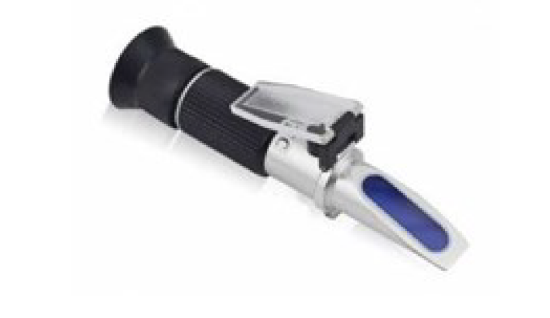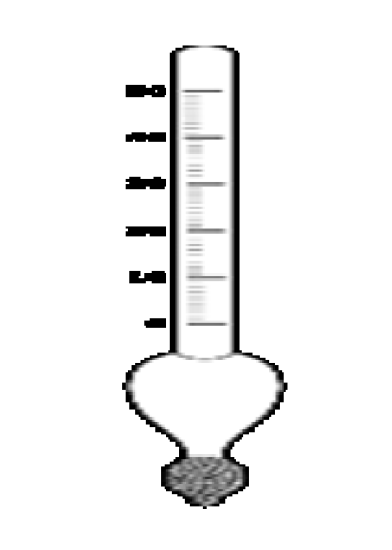1.8: Pie Doughs and Ice Cream
- Page ID
- 21178
Pie
The first recorded pie recipe was found to be written by the Romans. The first popular pies were traditionally meat pies. Today pies are filled with a variety of fillings such as meat, fruit, and custards. The first pies were not baked in the crust that we associate with pies. They were baked in “reeds” and only the fillings were made. Pies gains popularity through out Europe with the first Cherry Pie credit going to Queen Elizabeth I. Pies came to the Americas with the English settlers but the thick crust was seen as a vessel for the fillings. As the pie evolved the crust went from vessel to part of the dish. Today Pies are a traditional American dessert.
The Ingredients for Pie Crust
There are two types of pie crust flaky and mealy. Both use the same simple ingredients flour, fat, salt and water. The difference between the two are the way the fat and flour are put together.
- Flour – the ideal flour for pie crust is pastry flour. It has just enough proteins to form a gluten structure that will give the dough structure but keep the gluten low enough to keep the dough flaky. Pie dough should be mixed until the ingredients are just combined.
- Fat – hydrogenated shortening is the most popular fat to use for pie dough. It is soft enough to mix in but strong enough to produce a workable dough. Butter is also used but it has two down falls – it is expensive and has a low melting point. What makes it ideal is the mouth feel and flavor it adds to the curst.
- Liquid – the cheapest and best liquid to add is water. Ice water is normally used because it keeps the fat at a stable temperature and helps prevent it from melting. Milk can be used but it will cause the crust to brown quickly.
- Salt – this adds to the flavor of the crust. It is best to mix it with the flour or dilute in liquid to ensure even distribution.
Flaky Pie Dough
The fat for this dough is rubbed, or cut into the flour, until the pieces of butter are the size of a pea or hazelnut. This allows for some gluten formation when the water is added. As the dough comes together, the pieces of fat are flatten out with the dough thus giving it the flaky texture. Used often in pies that call for blind baking as well as the top for covered pies.
Mealy Pie Dough
The fat for a mealy dough is completely cut into the flour until the mix resembles a coarse cornmeal. There should be no lumps of fat in the mixture. The flour particles have been completely encased in fat and there less liquid is used to bind this one because the flour cannot absorb it. This type of dough has a few advantages over the flaky crust.
- This is a softer crust because gluten development is kept low due to the low absorption of water with the flour.
- Once baked this dough does not absorb much liquid so it will not become soggy from its filling.
NOTE: This is a popular crust for fruit and custard pies because it does not become soggy.
Ice Cream
Ice cream is simply a mixture of milk, cream, sugar, eggs, and flavorings that are combined and frozen in a machine that spins the mixture into a smooth and cream dessert. There are various names for the delectable treat but all are churned, and frozen. The constant movement of the machine ensure that the mixture does not freeze into a sold block. Most ice cream machines whether commercial or home style consist of the tube with a paddle that spins. A cooling system surrounds the tube freezing the mixture. As the paddle turns, it keeps the forming ice crystals in motion incorporating air into the ice cream, which leads to its texture.
Overrun is the name given to the air that is added to ice cream as it is mixed. This added air will increase the amount of finished product. Overrun is listed on packing in a percentage of the finished product. If you begin with a gallon of ice cream base and once spun, you finish with 2 gallons of ice cream then your overrun percentage is 100%.
Difference in the Names
- Ice Cream – made from a combination of milk, cream, sugar, flavoring and eggs. Has a richness and smoothness to the finished product. Has a good fat content that adds to the mouth feel. If made correctly should have small ice crystals that were frozen quickly with a good amount of overrun thus allowing for a smooth even melt in the mouth.
- Gelato – Italian style ice cream that is made usually from milk, sugars, and flavorings. They have a low fat content and, if made without fillers, will have a light texture and good melting quality. The overrun is usually low adding to the smoothest of the frozen dessert.
- Sherbets – fruit purees, water and sugars. They are spun in an ice cream machine. They have not fat added.
- Granita – fruit, water, flavorings and sugars. The fruit is puréed and flavorings can be added such as lemon juice and sugar. The mixture is place in a shallow pan and then placed in the freezer. As it begins to freeze a fork is used to flake the ice crystals into the mixture. This is done in stages until the mixture is completely flaked and frozen.
Success with Ice Cream
As with anything, you make in the kitchen a formula or recipe is used. At times, you can divert from the recipe and the product is the same or better. However, in the pastry world, the recipes are specific and deviations can ruin the outcome if not compensated for.
When it comes to ice cream this holds true. Too much fat and the mixture can have a grain texture when spun. Too much water and the ice crystals can become too big. Sugar is another ingredient that can be overused and thus ruin the final outcome of your frozen dessert.
When creating your own recipes for these items it helps to know how to determine how much sugar can be added. There are ways to do this using many different objects.
Brix – this is the sugar content of an aqueous solution. The brix meter can be used to test for the amount of sugar in your solution.

Hydrometer - this can also be used to measure the specific gravity of a liquid.

Egg – this is an easy way to measure the amount of sugar in a solution. If the water contains enough sugar in water then the egg will float. This happens because the egg will be less dense than the solution.


